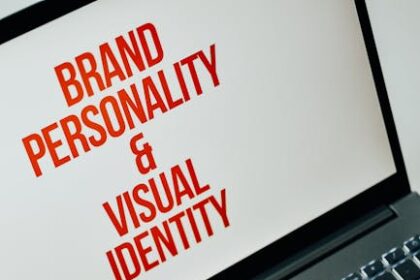Brand safety in video advertising transcends mere ad placement, encompassing a sophisticated strategic imperative to shield a brand’s reputation, financial stability, and consumer trust from association with inappropriate, harmful, or undesirable content. It is a critical component of any digital marketing strategy, particularly as video consumption continues its meteoric rise across an ever-diversifying array of platforms and formats. In an environment where a single misplacement can trigger widespread public outcry, boycotts, and significant reputational damage, understanding and proactively managing brand safety is not merely good practice; it is foundational to business continuity. The core concept revolves around ensuring that advertisements are displayed within content environments that align with a brand’s values, image, and target audience’s sensibilities. This goes far beyond explicit illegal content; it includes categories like hate speech, misinformation, violence, sexualized material, illegal activities, dangerous acts, and even content that might be deemed merely controversial or inconsistent with the brand’s desired perception. The “negative adjacency” effect, where an ad placed next to objectionable content implicitly endorses or is perceived as supporting that content, can erode decades of brand building in moments. This erosion manifests not only in public perception but also in diminished campaign performance, wasted ad spend, and a direct impact on the bottom line. The digital landscape, especially in video, is inherently dynamic and decentralized, making brand safety a complex, continuous challenge. The sheer volume of user-generated content (UGC), the rapid proliferation of new video platforms, and the increasing sophistication of ad tech stacks mean that manual oversight is no longer sufficient. Brands must embrace a multi-layered approach, combining advanced technology, strategic partnerships, robust internal policies, and constant vigilance to navigate these turbulent waters effectively. The stakes are undeniably high, with potential consequences ranging from significant financial losses due to advertiser boycotts and reduced media spend to severe reputational damage that can take years, if not decades, to repair, fundamentally impacting consumer loyalty and market share. Protecting a brand’s image in the sprawling, often unpredictable world of online video advertising is thus a non-negotiable priority, demanding foresight, adaptability, and a commitment to ethical media buying practices.
The video advertising landscape is in a constant state of flux, rapidly expanding across myriad channels and formats, each presenting unique opportunities and intricate brand safety challenges. Understanding this evolving ecosystem is paramount for effective image protection. Programmatic advertising, while offering unprecedented efficiency and targeting capabilities, significantly complicates brand safety efforts. The automated, real-time bidding process, where ads are bought and sold in milliseconds across a vast network of publishers and exchanges, often lacks the direct human oversight that characterized traditional media buying. This automation can lead to ads appearing on questionable sites or alongside inappropriate content without explicit intent. The rise of user-generated content (UGC) platforms, epitomized by giants like YouTube and TikTok, introduces another layer of complexity. While UGC offers authenticity and immense scale, its decentralized creation and vast volume make comprehensive moderation incredibly challenging. Brands advertising on these platforms risk appearing next to amateurish, unverified, or even overtly harmful content uploaded by individual users. Furthermore, the explosion of Connected TV (CTV) and Over-The-Top (OTT) streaming services, including ad-supported video on demand (AVOD) platforms, has reshaped media consumption patterns. While these environments often boast higher quality, professionally produced content, they are not immune to brand safety concerns. Issues can arise from the broader context of a series, specific scenes within a show, or even the advertising content from competitors or unrelated, potentially contentious brands running in adjacent ad pods. The integration of advertising into gaming environments, particularly through in-game video ads or sponsorship of esports events, presents novel considerations. The content of the game itself, the behavior of players, and the communities formed around gaming can all introduce brand safety risks if not properly vetted. Emerging formats, such as shoppable video, interactive ads, and virtual reality/augmented reality (VR/AR) experiences, push the boundaries further, creating new frontiers for potential misplacement. Even AI-generated content and deepfakes, while still nascent in widespread advertising, pose future threats as their realism and proliferation increase, blurring the lines between authentic and manipulated media. The sheer scale and fragmentation of the video ecosystem mean that brand safety cannot be a one-size-fits-all solution. Each platform, content type, and ad format demands specific protocols, technological solutions, and ongoing vigilance. The continuous innovation in video consumption means advertisers must remain agile, constantly re-evaluating their strategies and leveraging the latest tools to protect their image across an increasingly complex and expansive digital frontier.
Categorizing brand safety risks in video advertising is essential for developing comprehensive protection strategies. These risks generally fall into three interconnected areas: content, context, and credibility. Content risks refer to the actual material of the video itself, which might be deemed harmful or inappropriate for a brand’s association. These categories are often universal and typically include: Hate Speech and Discrimination: Content promoting hatred, violence, or discrimination against groups based on race, ethnicity, religion, gender, sexual orientation, disability, or other protected characteristics. Violence and Graphic Content: Explicit or simulated violence, gore, self-harm, or content that is excessively disturbing. Illegal Activities: Content depicting, encouraging, or facilitating illegal acts such as drug use, illicit trade, or criminal behavior. Adult/Sexually Explicit Content: Pornography, nudity, or sexually suggestive material not suitable for general audiences. Misinformation and Disinformation: False or misleading information, particularly on sensitive topics like health, politics, or major public events, which can erode public trust and spread harmful narratives. Extremist Content: Material promoting radical ideologies, terrorism, or inciting violence against others. Child Endangerment/Exploitation: Any content that puts children at risk, depicts child abuse, or exploits minors. Beyond these universally prohibited categories, brands often have specific content considerations based on their industry or values, such as alcohol/tobacco promotion, or political/controversial issues. Contextual risks extend beyond the content of the video itself to its surrounding environment. This includes: User Comments and Engagement: Even if the video content is safe, comments sections can quickly devolve into hate speech, harassment, or other inappropriate discussions, creating a negative environment for an adjacent ad. Adjacent Videos/Content: On platforms like YouTube, an ad might play before a safe video, but subsequent autoplay videos or suggested content could be highly objectionable, creating an indirect association. Channel/Publisher Reputation: The overall reputation and historical content of a specific channel, website, or app can influence how an ad is perceived, even if the current video is benign. A channel known for controversial commentary or sensationalism might still pose a risk. Live Streaming Volatility: Live video, particularly on social platforms, is notoriously difficult to moderate in real-time. Unscripted events or audience interactions can rapidly shift content into unsafe territory without warning. Credibility risks largely relate to the authenticity and legitimacy of the advertising environment itself, often overlapping with ad fraud. These include: Ad Fraud (Non-Human Traffic/Bots): Ads served to automated bots rather than real human viewers, wasting ad spend and preventing genuine engagement. While not directly brand unsafe content, it signifies a non-credible environment. Domain Spoofing/URL Misrepresentation: A fraudulent practice where an ad is supposedly served on a reputable website, but in reality, it appears on a low-quality, unsafe, or even malicious site, misrepresenting the true placement. Invalid Traffic (IVT): A broader category encompassing all non-human or illegitimate traffic, including fraudulent clicks, impressions, and views. Lack of Viewability: While not a direct brand safety risk in terms of content, if an ad is not actually seen by a human (e.g., played out of frame, on a hidden player), it undermines the investment and the brand’s ability to connect. Addressing these multifaceted risks requires a layered approach combining technological detection, human oversight, and diligent partner selection.
A crucial distinction in brand protection strategy is the difference between brand safety and brand suitability. While often used interchangeably, understanding their nuanced meanings is vital for advertisers seeking precise control over their video ad placements. Brand safety refers to the absolute minimum standard of protection, preventing a brand’s ads from appearing alongside universally harmful, illegal, or genuinely dangerous content. These are the “red lines” that nearly all brands agree upon and typically include categories like hate speech, violence, illegal activities, child endangerment, and pornography. Brand safety is about preventing reputational damage from extreme negative adjacency. It is non-negotiable and represents a baseline level of risk mitigation. The focus is on blocking content that could actively harm consumers, contribute to societal harm, or cause severe, immediate backlash against the brand. Think of it as a defensive perimeter designed to keep a brand out of truly toxic environments. Brand suitability, conversely, is a more granular and subjective concept. It relates to the alignment of content with a specific brand’s unique values, target audience, marketing objectives, and risk tolerance. While a piece of content might be “brand safe” (i.e., not illegal or overtly harmful), it might not be “brand suitable” for a particular advertiser. For example, an ad for a children’s toy company might be brand safe on a news channel discussing a serious geopolitical crisis, but it would not be brand suitable due to the mismatch in tone and audience relevance. Similarly, a fast-food brand might deem content discussing healthy eating or obesity unsuitable, even if the content itself is not harmful. Another example: a luxury car brand might not want their ads appearing on a channel focused on budget travel or extreme sports, even if the content is clean. The content isn’t “unsafe,” but it doesn’t align with the brand’s premium image or target demographic. Brand suitability allows for a more nuanced approach, enabling advertisers to define their own “green, amber, and red” zones for content, moving beyond just blacklisting harmful categories. It allows brands to avoid content that, while not overtly dangerous, could dilute their message, misalign with their desired brand perception, or simply not resonate with their specific audience. The Global Alliance for Responsible Media (GARM) framework provides a widely adopted industry standard for classifying suitability across a spectrum of content categories, helping brands define their comfort levels with topics like tragedy, conflict, adult themes, and sensitive social issues. This framework allows advertisers to specify their suitability thresholds (e.g., “fully monetize,” “monetize with caution,” “avoid monetizing”) for various content classifications. In essence, brand safety is about avoiding what is definitely bad, while brand suitability is about choosing what is optimally good and strategically aligned for your specific brand. Achieving both requires distinct but complementary strategies. Safety relies heavily on advanced technological filters and universal blacklists, while suitability demands greater customization, contextual analysis, and an understanding of the subtle nuances of content and audience. Implementing both provides advertisers with maximum control and confidence in their video advertising placements.
The battle for brand safety in video advertising is increasingly fought on the technological front. Advanced solutions, powered by artificial intelligence (AI) and machine learning (ML), are paramount for navigating the vast, dynamic, and often unpredictable digital landscape. These technologies enable rapid, scalable analysis of video content, audio, and surrounding context to identify and mitigate risks. Pre-bid and Post-bid Filtering form the foundational layers of automated brand safety. Pre-bid filtering occurs before an ad impression is purchased. Demand-Side Platforms (DSPs) and brand safety verification partners integrate algorithms that analyze potential ad placements in real-time against an advertiser’s defined brand safety and suitability parameters (e.g., blacklists, whitelists, GARM categories). If a placement is deemed risky, the bid is automatically blocked, preventing the ad from appearing. Post-bid filtering, conversely, involves monitoring ads after they have been served. This provides critical data on where ads actually ran, identifying any brand safety breaches that might have slipped through pre-bid filters. While it doesn’t prevent misplacement in real-time, it offers valuable insights for refining future strategies, adjusting blacklists, and seeking compensation for misaligned impressions. Contextual AI and Semantic Analysis are game-changers in moving beyond simplistic keyword blocking. Traditional keyword blocking can be overly blunt, preventing ads from appearing next to relevant, safe content simply because a “forbidden” word is mentioned (e.g., a news report on “gun control” could block an ad for a sporting goods store, even if the context is safe). Contextual AI uses natural language processing (NLP) to understand the meaning and sentiment of the content, not just individual words. It can discern irony, satire, and the overall tone of a video or article, ensuring that ads are placed in truly appropriate environments. Semantic analysis takes this a step further, mapping concepts and relationships within the content to build a richer understanding of its thematic concerns. Machine Learning and Computer Vision are critical for analyzing the visual elements of video. ML models can be trained on vast datasets to recognize objects, scenes, actions, and even facial expressions within video frames. Computer vision algorithms can identify prohibited content categories like violence, nudity, drug paraphernalia, or extremist symbols that might not be detectable through audio or text analysis alone. For example, they can differentiate between a violent video game and real-world violence, or between medical nudity and pornography. Audio Analysis complements visual and textual analysis by transcribing spoken words and detecting specific sounds. This can identify hate speech, profanity, gunshots, or other audio cues that signal unsafe content. Advanced audio analysis can even detect emotional tone and sentiment in speech. Some technologies are also exploring blockchain for transparency, though its widespread application in brand safety is still nascent. The idea is to create an immutable, verifiable ledger of ad impressions, providing greater transparency across the supply chain and making it harder for fraudulent actors to operate. Finally, Verification and Measurement Platforms from third-party providers (e.g., Integral Ad Science (IAS), DoubleVerify, Moat) integrate many of these technologies. They act as independent auditors, providing advertisers with data on viewability, invalid traffic, brand safety, and suitability across their campaigns. These platforms are essential for objectively assessing risk, ensuring accountability from media partners, and providing a unified view of ad quality metrics. The continuous development and refinement of these technological solutions are vital, as advertisers face an arms race against increasingly sophisticated forms of harmful content and ad fraud.
Developing robust strategic approaches is paramount for advertisers aiming to safeguard their brand image in video advertising. A proactive and multi-faceted strategy is far more effective than a reactive one. The cornerstone of any such strategy is establishing clear, comprehensive brand safety and suitability guidelines. These internal policies must precisely define what constitutes unacceptable content (brand safety) and what content is misaligned with the brand’s values, tone, and target audience (brand suitability). This includes creating detailed whitelists (approved channels/publishers) and blacklists (prohibited channels/publishers), as well as defining category exclusions based on GARM standards or custom requirements. These guidelines must be communicated clearly across marketing teams, media agencies, and technology partners to ensure consistent application. Working with reputable partners is a non-negotiable step. Advertisers must thoroughly vet their ad networks, Demand-Side Platforms (DSPs), Supply-Side Platforms (SSPs), and direct publishers. Partner agreements should include explicit brand safety clauses, outlining responsibilities, remediation processes, and transparency requirements. Prioritize partners who demonstrate a commitment to brand safety through their own content moderation efforts, technological capabilities, and adherence to industry standards. Ask for proof of their internal processes, moderation teams, and the third-party verification solutions they employ. Leveraging third-party verification is not an option; it’s an essential layer of defense. Independent verification partners like IAS, DoubleVerify, and Moat provide unbiased, real-time data on where ads are appearing, their viewability, and the presence of invalid traffic or brand safety violations. This objective data allows advertisers to monitor campaign performance against brand safety metrics, identify potential issues, and optimize placements accordingly. It provides a crucial layer of accountability for media partners and helps validate the effectiveness of internal brand safety measures. Proactive monitoring and auditing must be continuous, not a one-off task. Regular audits of ad placements, both manual and automated, are necessary to catch emerging threats or misconfigurations. This involves reviewing sample ad placements, analyzing performance reports from verification partners, and staying abreast of industry news regarding new forms of harmful content or ad fraud. Developing a system for real-time alerts when potential violations are detected is also crucial. Despite the sophistication of AI, human oversight and expert review remain irreplaceable. While technology excels at scale, human judgment is superior for nuanced contextual understanding, identifying new forms of subtle misinformation, or interpreting complex cultural references. Brands should allocate resources for human review of suspicious content flagged by AI, and for periodic manual spot-checks of placements. This blend of machine speed and human intelligence offers the most robust protection. Finally, crisis management planning is vital. No brand safety strategy is foolproof. Brands must have a clear, documented plan for what to do when an incident occurs. This includes protocols for immediate ad suspension, internal communications, external public relations responses, and post-incident analysis to prevent recurrence. Educating internal teams and agencies on the nuances of brand safety and the specific guidelines of the brand ensures that everyone involved in the media buying process understands the importance and mechanics of image protection, fostering a culture of collective responsibility.
The imperative role of third-party verification and measurement in brand safety cannot be overstated; it serves as the independent arbiter of quality and accountability in the complex digital advertising ecosystem. For advertisers, relying solely on self-reported data from publishers or ad platforms is inherently risky, as conflicts of interest can arise. Third-party verification partners provide unbiased, objective, and transparent reporting on critical metrics, offering an essential layer of trust and oversight. These specialized firms, such as Integral Ad Science (IAS), DoubleVerify (DV), and Moat (now part of Oracle Advertising), deploy sophisticated technologies to monitor and analyze ad impressions across various platforms and formats. Their core functions encompass several key areas vital for comprehensive brand protection. Firstly, Brand Safety and Suitability Verification is their most direct contribution. These platforms integrate with DSPs and ad servers to scan content environments in real-time, both pre-bid and post-bid, against an advertiser’s defined brand safety and suitability parameters. Using a combination of AI, machine learning (including computer vision and natural language processing), and human review, they identify and block placements on pages or within videos containing prohibited content (e.g., hate speech, violence, illegal activities) or content deemed unsuitable (e.g., politically sensitive, adult themes, tragedy) based on GARM categories or custom classifications. They provide advertisers with detailed reports on where ads actually ran, flagging any violations and often providing context or screenshots of the problematic content. Secondly, these platforms are crucial for Invalid Traffic (IVT) Detection and Fraud Prevention. IVT includes non-human traffic (bots), sophisticated invalid traffic (SIVT) like domain spoofing, ad stacking, and pixel stuffing. Third-party verifiers analyze traffic patterns, IP addresses, user agents, and other signals to identify and filter out fraudulent impressions. This ensures that ad spend is directed towards genuine human viewers, preventing budget waste and enhancing overall campaign effectiveness. Ad fraud is intrinsically linked to brand safety because fraudulent environments often lack content quality control, making them breeding grounds for unsafe content adjacency. Thirdly, Viewability Measurement is a fundamental service. While not directly a brand safety issue, viewability ensures that an ad actually has the opportunity to be seen by a human. An ad is typically considered viewable if at least 50% of its pixels are in view for a minimum of two consecutive seconds for video ads. Verifiers provide independent data on viewability rates, allowing advertisers to optimize for placements that genuinely engage audiences and ensure their message is delivered effectively. Low viewability can indicate problematic inventory or even fraudulent activity. Fourthly, Geo-Compliance and Contextual Targeting Insights are often provided. Verification platforms can confirm that ads are delivered to the correct geographic locations and offer deeper insights into the specific context and sentiment of the content surrounding ads, moving beyond basic keyword blocking to provide more nuanced suitability analysis. The benefits of leveraging these third-party verification partners are multifaceted. They provide unbiased data, essential for making informed decisions and holding media partners accountable. They offer scalability, as their technologies can analyze vast amounts of data far beyond human capacity. They bring specialized expertise, staying ahead of evolving threats and developing cutting-edge detection methods. Ultimately, they foster greater transparency across the programmatic supply chain, empowering advertisers with the confidence that their brand image is protected and their ad spend is efficient and effective. Integrating these verification solutions from the campaign planning stage through post-campaign analysis is an essential investment for any brand serious about safeguarding its reputation in video advertising.
Publisher and platform accountability is an indispensable pillar of brand safety in the video advertising ecosystem. While advertisers bear the responsibility for setting their brand safety standards and employing verification tools, the ultimate control over content lies with the publishers and platforms that host and distribute it. Their commitment to fostering a safe digital environment directly impacts the efficacy of all brand safety efforts. Publishers and platforms, encompassing major social media sites, streaming services, and professional content providers, have a fundamental obligation to implement robust content moderation efforts. This involves deploying a combination of sophisticated AI, machine learning algorithms, and dedicated human moderation teams to identify, review, and remove content that violates their community guidelines or advertiser brand safety policies. The scale of UGC platforms, in particular, necessitates massive investment in this area, constantly refining algorithms to detect harmful content and employing thousands of human reviewers to handle edge cases and nuanced violations that AI might miss. Platforms must also ensure these moderation systems are agile enough to adapt to emerging threats, such as new forms of hate speech or misinformation. Transparency in inventory and content classification is another critical responsibility. Publishers should provide clear and accurate information about the nature of their content inventory, allowing advertisers to make informed decisions about where their ads will appear. This includes providing content labels (e.g., using GARM categories), allowing for clear blacklisting and whitelisting capabilities, and offering granular reporting on ad placements. Trust between advertisers and publishers hinges on this transparency, minimizing blind spots in the ad supply chain. Furthermore, platforms must offer effective tools and controls for advertisers. This includes robust controls for setting brand safety and suitability preferences, enabling advertisers to exclude specific content categories, channels, or even individual videos. Integration with third-party verification partners is also paramount, allowing advertisers to use their preferred measurement solutions seamlessly. Providing detailed reporting on brand safety performance and clear channels for communication and issue resolution is also essential. Enforcement of community guidelines must be consistent and rigorous. Inconsistent application of rules undermines trust and allows problematic content to proliferate. Platforms must demonstrate a commitment to taking action against creators and users who violate their policies, including demonetization, content removal, or even account suspension. This creates a deterrent effect and signals a genuine commitment to a safer environment. Beyond individual platform efforts, industry-wide collaboration and initiatives are vital. Organizations like the Global Alliance for Responsible Media (GARM), a cross-industry initiative uniting advertisers, agencies, media companies, and platforms, play a crucial role in establishing common definitions, standards, and best practices for brand safety and suitability. Publishers and platforms are active participants in these discussions, contributing to the development of frameworks that benefit the entire ecosystem. This collaborative approach helps standardize reporting, promotes shared responsibility, and drives collective progress towards a healthier digital advertising landscape. Ultimately, the burden of maintaining a safe environment cannot fall solely on advertisers. Publishers and platforms, as content gatekeepers, must uphold their end of the bargain by actively investing in content moderation, fostering transparency, empowering advertisers with control, and collaborating on industry standards to ensure a sustainable and trustworthy ecosystem for video advertising.
Navigating the future of video advertising brand safety requires foresight and adaptability, as emerging technologies and evolving user behaviors continuously reshape the threat landscape. The advent of immersive digital environments, particularly the Metaverse, presents an entirely new frontier for brand safety challenges. As brands explore opportunities within persistent virtual worlds, they will contend with user-generated content in 3D, avatar interactions, virtual events, and highly personalized experiences. The complexity of moderating real-time, dynamic 3D environments for hate speech, harassment, virtual violence, or inappropriate virtual items will be immense. Traditional content classification methods may prove inadequate, necessitating new approaches to detect and mitigate risks in a spatial, interactive context. This also raises questions about brand safety in relation to user proximity to problematic avatars or virtual locations. The proliferation of AI-generated content and deepfakes represents another significant challenge. As AI tools become more sophisticated, enabling the creation of hyper-realistic videos, audio, and images with minimal effort, the line between authentic and fabricated content will blur. Deepfakes can be used for misinformation, impersonation, or creating illicit material, posing severe reputational risks if a brand’s ad appears alongside or within such manipulated content. Detecting AI-generated fakes, especially those designed to be subtle, will require increasingly advanced AI-driven detection mechanisms that can differentiate between synthetic and authentic media. The speed at which these fakes can proliferate also demands real-time verification capabilities. Regulatory pressures and data privacy will continue to shape the brand safety landscape. Governments worldwide are increasingly scrutinizing digital platforms and their content moderation practices. New legislation related to online safety, privacy (like GDPR and CCPA), and content accountability could impose stricter requirements on platforms and advertisers, impacting how data is collected for targeting and verification, and potentially increasing liability for content adjacency. Brands will need to stay abreast of these evolving legal frameworks to ensure compliance and avoid penalties. The rise of connected devices and cross-platform consumption means that brand safety strategies must become more unified and holistic. As consumers seamlessly move between mobile, desktop, CTV, and in-game environments, ensuring consistent brand safety across all touchpoints becomes crucial. This necessitates solutions that can operate effectively across disparate technological stacks and content formats, providing a single, comprehensive view of brand risk. Finally, the need for industry-wide collaboration and standards will intensify. No single entity can solve the complex challenges of brand safety in isolation. Continued collaboration through initiatives like GARM, bringing together brands, agencies, platforms, and verification companies, will be essential for developing shared definitions, best practices, and technological solutions that benefit the entire ecosystem. The future demands continuous adaptation, investment in advanced detection technologies, a proactive stance on emerging risks, and a commitment to shared responsibility among all stakeholders to maintain a safe and trustworthy environment for video advertising.
Building a resilient brand safety strategy necessitates organizational alignment and a robust crisis preparedness plan, recognizing that brand safety is not solely an operational task but a strategic imperative that impacts every facet of a brand’s reputation and financial health. Internal education and cross-functional collaboration are foundational. Brand safety cannot be siloed within the media buying team. Marketing leadership, legal counsel, public relations, product development, and even sales teams must understand the principles of brand safety, the brand’s specific guidelines, and the potential consequences of missteps. Regular training sessions, clear internal communications, and accessible documentation of policies are crucial. Fostering a culture where everyone involved in content creation, media planning, and campaign execution understands their role in protecting the brand’s image is paramount. This cross-functional understanding ensures that brand safety considerations are embedded from the initial campaign conceptualization through to post-campaign reporting. For instance, the creative team should be aware of potential sensitivities in their ad content itself that might trigger brand safety flags on certain platforms. Establishing clear lines of responsibility and accountability within the organization is also vital. Who owns the brand safety policy? Who is responsible for monitoring? Who makes the final decision on incident response? Defining these roles minimizes confusion during crises and ensures swift, coordinated action. Regular internal audits of brand safety practices and performance should be conducted to identify weaknesses and areas for improvement, incorporating feedback from all relevant departments. A well-defined vendor management framework specific to brand safety is also critical. This includes comprehensive due diligence when selecting ad tech partners, agencies, and publishers. Service level agreements (SLAs) must explicitly outline brand safety and suitability expectations, including reporting frequency, remediation processes, and financial penalties for violations. Holding partners accountable to these contractual obligations ensures shared responsibility and incentivizes them to uphold high standards. Proactive monitoring systems must be in place, integrating data from internal tools, third-party verification partners, and industry intelligence sources. This includes setting up automated alerts for high-risk content adjacency, unusual traffic patterns, or negative sentiment mentions related to brand campaigns on social media. The ability to detect potential issues in real-time is crucial for minimizing exposure and rapid response. Finally, and perhaps most critically, is the development of a comprehensive crisis preparedness and response plan. Despite all proactive measures, brand safety incidents can and do occur. A robust plan should outline: Identification and Verification: How will potential incidents be identified (e.g., automated alerts, media monitoring, consumer complaints)? What is the process for quickly verifying the severity and scope of the issue? Immediate Action: Protocols for immediate pausing or termination of affected campaigns, channels, or platforms to prevent further exposure. This includes clear decision-making trees for different levels of risk. Internal Communication: Who needs to be informed, and through what channels? This ensures all relevant stakeholders, from legal to PR, are immediately aware and coordinated. External Communication and PR Strategy: A pre-approved framework for public statements, social media responses, and media outreach. This often involves collaborating closely with public relations teams to manage narrative and reputation effectively. Transparency and a commitment to swift remediation are key during a public crisis. Root Cause Analysis and Remediation: A structured process for investigating how the incident occurred, identifying systemic vulnerabilities, and implementing corrective actions to prevent recurrence. This includes reviewing policies, adjusting technological filters, and re-evaluating partner relationships. Post-Incident Review: A comprehensive review of the crisis response itself, learning from both successes and failures to refine the brand safety strategy and crisis plan continuously. By treating brand safety as an organizational priority, embedding it across teams, and preparing rigorously for potential incidents, brands can build a resilient defense against the evolving threats in video advertising, ensuring their image remains protected and their consumer trust intact.











